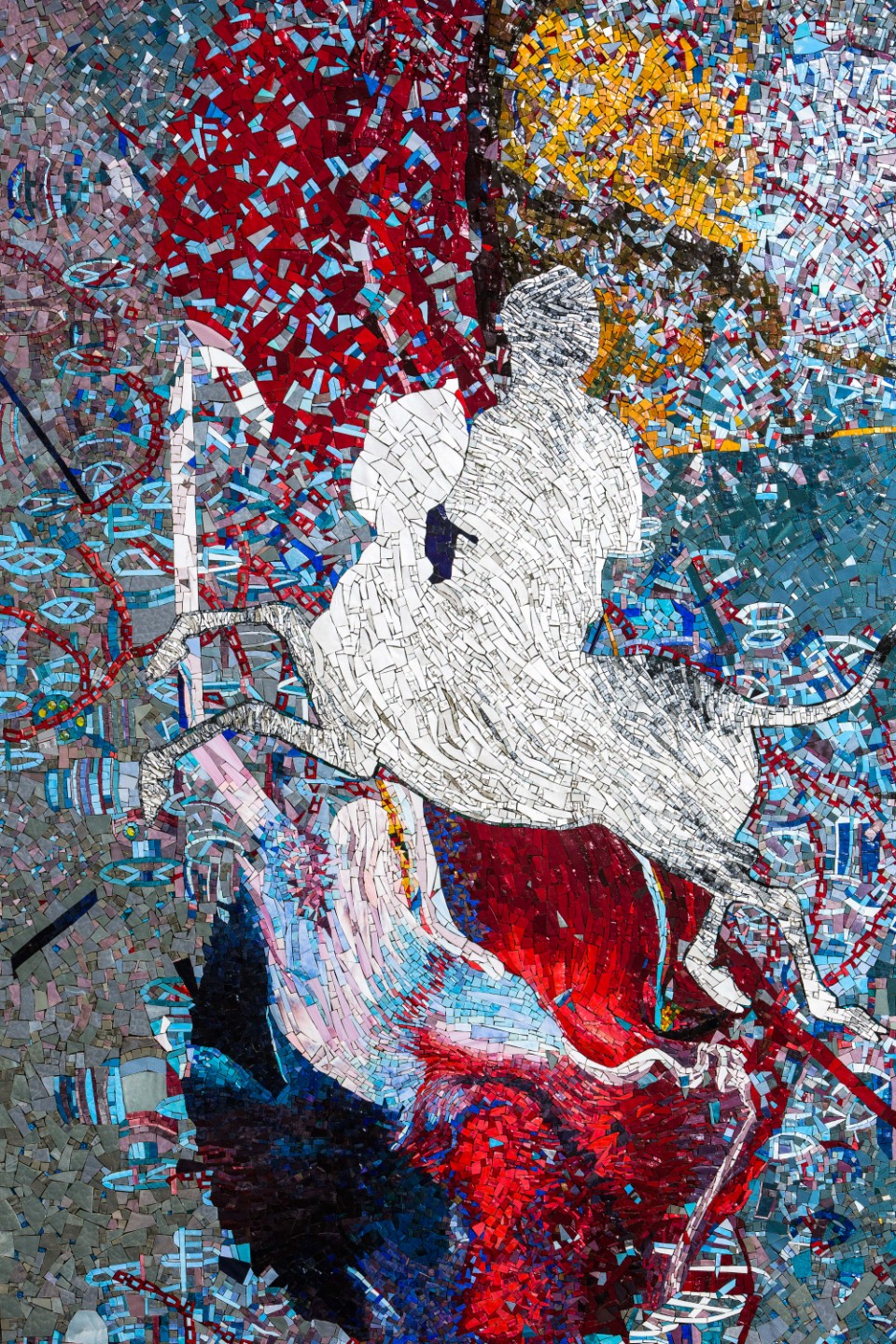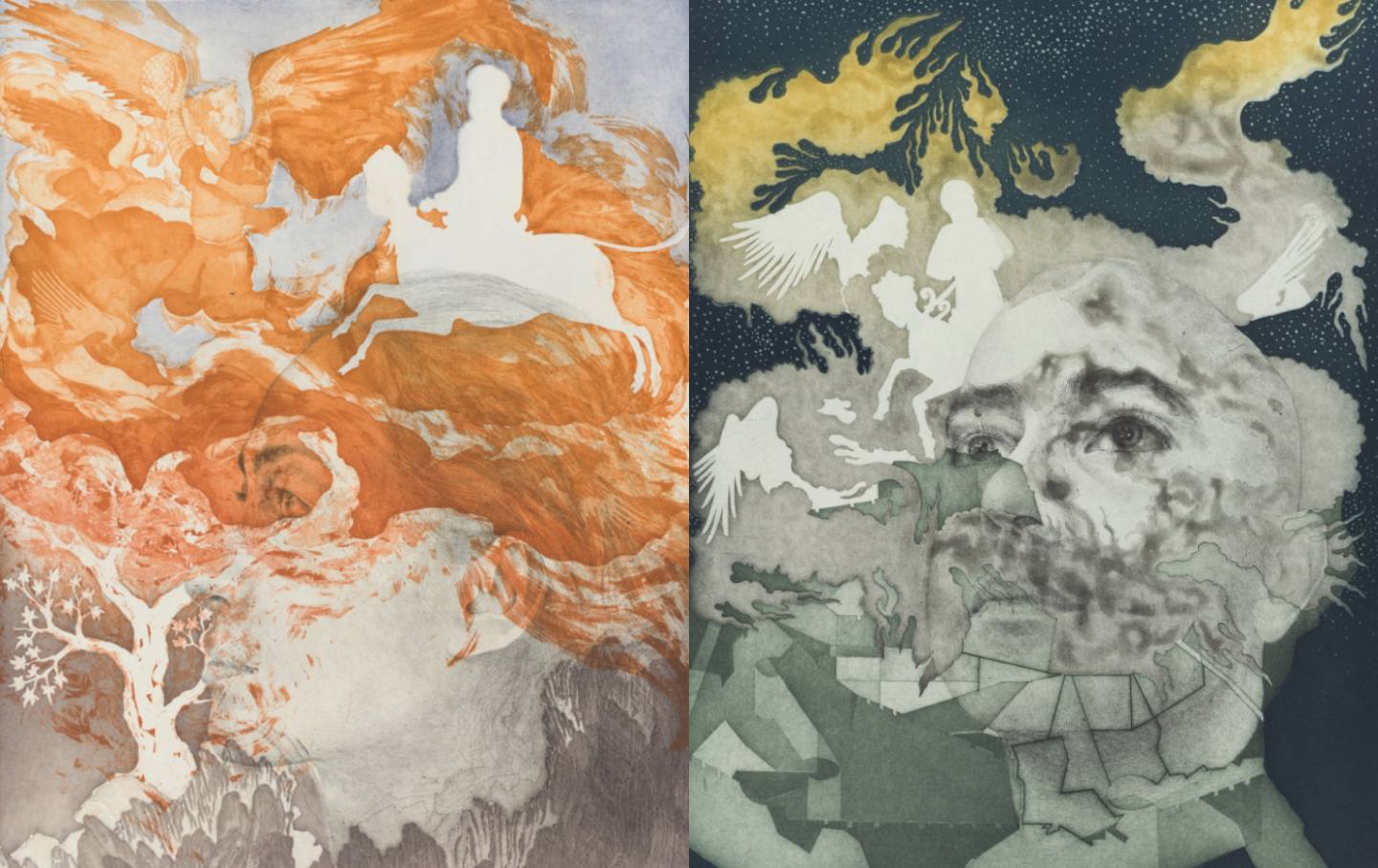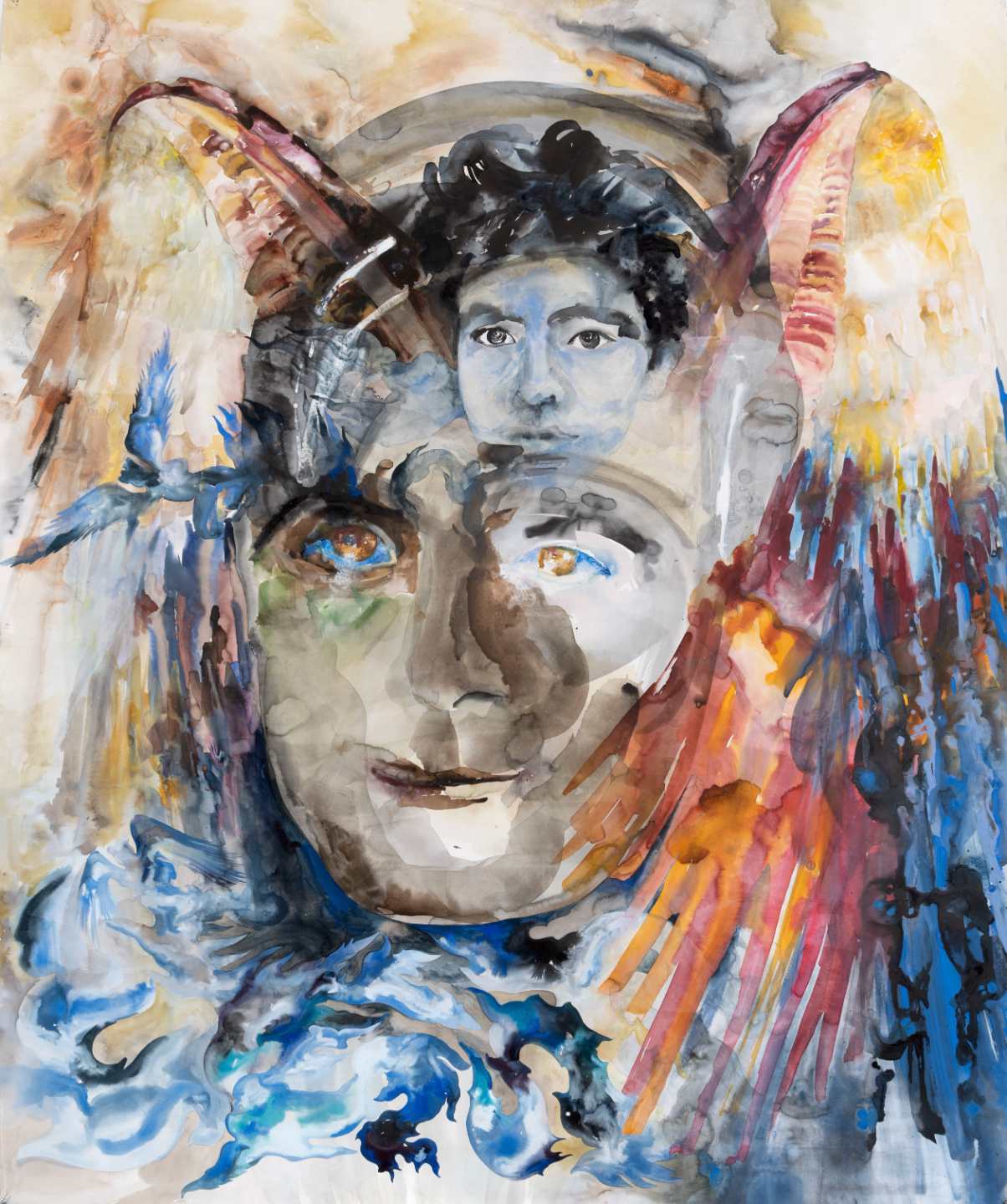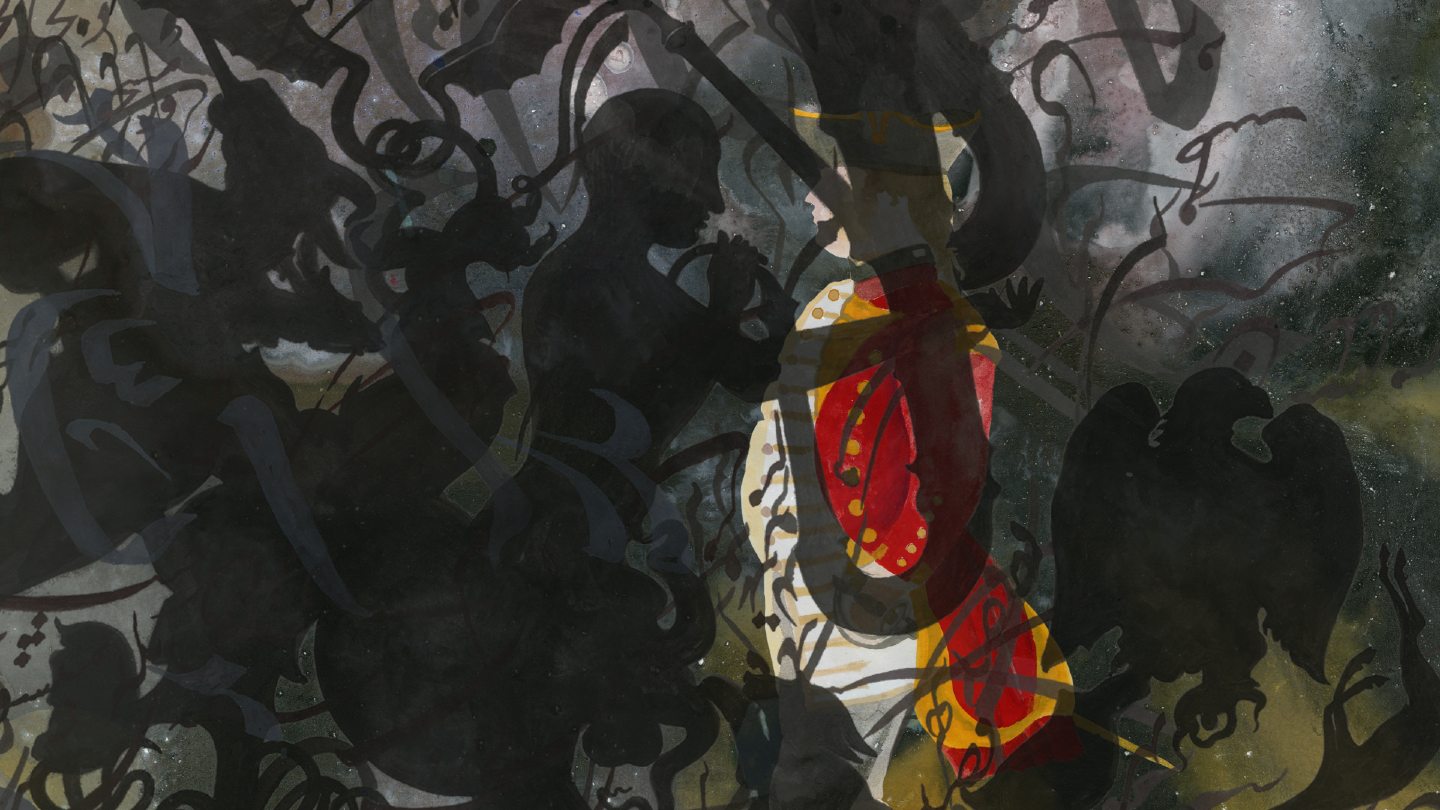In an age of visual profusion, when the vividness and abundance of images consumed for distraction and commerce is breathtaking, it might seem naive for an artist to try to create images of incantatory, even magical power. To seek a holy relationship to the image today is often seen as foolhardy.
In the Western tradition, before the Renaissance and Reformation, images were the vehicle of presence; they could summon a saint into being. Observers stood in veneration, seeking intercession, dialogue, wisdom; an image was the basis of a relationship with an order of experience far deeper than aesthetic appreciation.
The extraordinary and unique work of Shahzia Sikander proceeds from a faith in this primal power of the image, and in the belief of an artist as a seer. It is a timeless faith, at odds with our accelerated times, which only makes Sikander’s commitment to plumbing the mysterious power of images all the more remarkable.
Over the course of her career, Sikander’s image production has grown at once more subtle and more encompassing. Her reclaiming of the iconography of the Prophet from the historical Indo-Persian painting canon, replete with representations of the otherworldly and its angelic hosts, is more than just a nod to a historical mythos. It is an ensign signaling her profoundest ambition: to reclaim the mythic and sublime not as modes of commentary, or even of expression, but as gateways to experience itself.
In 2015, Sikander reached out to me with an idea to collaborate on a project she was working on. A conversation started, and slowly, we began to work together. Most recently, Sikander has penned portraits based on characters in my new book, Homeland Elegies.
Sikander and I wrote our own questions to guide our conversation about art, Islam, and politics.
—Ayad Akhtar

How did you meet?
Popular
"swipe left below to view more authors"Swipe →How did your collaboration begin?
SS: I thought you might be interested in matters of representation and identity—
AA: And I was resolutely not interested in that!
SS: Which I figured out soon enough. But it got us on the subject of Islamic philosophy, spirituality, and the Prophet.
AA: Which is a subject I am often on. One of the things that I find fascinating is how little people are interested in approaching the Prophet as a literary construction. Which is so different from how the Old Testament is now read: where we can approach it as a literary text, with its major figures operating as characters in a story, where we can extract literary and sociological meaning from the narrative and linguistic construction. It’s so clear that the construction of the Prophet’s identity is rich with exactly these kinds of valences, and they are mostly lost because there is so little interest in reading the Quran that way.
SS: The conversation led to the topic of the miraj, in particular its role in Muslim traditions and the complexities inherent in his imagination and depiction, both in Islamic lands and in the West.

AA: Just to clarify, miraj is the tradition of the Prophet’s alleged miraculous journey into the celestial realms, all of which took place over the course of a single night. Interestingly enough, some have seen the tradition of miraj as part of Dante’s inspiration for his Divine Comedy.
SS: The resulting collaboration, a series of four etchings titled Portrait of the Artist and Breath of Miraj, provides a lyrical interpretation of the Prophet’s celestial ascent. For me, this work was rather uncanny in its timing: I won the Princeton commission around that moment and also started researching several historical miraj paintings with the art historian John Seyller such as the Ilkhanid paintings held in the Topkapı Palace Library in Istanbul, the Timurid miraj paintings in the David Collection in Copenhagen, and the ascension painting attributed to Sultan Muhammad from Khamsa of Nizami, Tabriz Iran, in the British Library. The more I studied the various historical miraj paintings, the more I connected I felt to the visual, stylistic, and emotional intelligence of the works. It was a deeply moving experience. Then I had the epiphany to incorporate the ascension motif in the Princeton mosaic, with the hope to inject a visceral and powerful experience for the viewer.
AA: And to stick an effigy of me into the middle of it!
SS: You didn’t stop me! [Laughing] To clarify, it’s in a separate section of the tripartite related to life and death.
Ayad, can you tell us more about the series of portraits Shahzia created in response to your characters?
AA: In the spring of 2018, I started writing a kind of epic lyric to America, which would eventually become Homeland Elegies. I shared an early chapter of it with you, as a way of getting some perspective on what I’d done. It was a chapter that was partly set in Pakistan and that dealt with the interweaving of the myth and identity in the generation of American immigrants from Pakistan that my parents represented.
SS: That early chapter was striking as it was very visual. I felt connected to the scenes, driving in the car with you, your father and the driver, privy to everybody’s body language and the conversation, while hearing the street kids singing in the slums. The tension between the father and son, the different realities of class in Pakistan—all of this was so palpable.

AA: The episode you’re referring to is at the end of the chapter, when my father agrees to visit the sick son of his driver in the shantytown where the boy is languishing from a high fever.
SS: The timing, as usual, was uncanny. I was reading Mathew Arnold’s poem Sohrab and Rustum while researching the Shahnameh folios at the Aga Khan Museum in Toronto and the MET museum parsing the Persian epic poem about the father and son trope where the father accidentally kills his son. The cyclical nature of violence inherent in that tragedy was playing in the background when your book landed in my inbox.
The relationship of father and son that unfolds through your fiction gave me another lens into the generational dynamic. Immigrant parents and their first-generation children straddling diasporic tensions and cultural expectations in America is also a topic of interest to me. As you know, a few of the new paintings touch on all these points. My favorite is the theme of the child emerging out of the man’s forehead, intense with rage or determination, it’s not clear.
AA: And then a series of graphite portraits came about. I don’t remember exactly what the genesis was, but I think you had done a portrait of one of your family members, and I recall making a comment about the way you were working in the tradition of both the Mughal miniature and [Jean-Auguste-Dominique] Ingres [a French neoclassical painter].
That led to a conversation about the various portrayals in Homeland Elegies of American life, not just the American Pakistani diaspora, but a series of portraits that covered the range from Robert Bork [a conservative federal judge and jurist] to my mother.
SS: What was particularly pregnant was the idea of portraits that were thoroughly American, as the narrative is, but which are informed by a Muslim iconographic tradition, in this case, miniature.
AA: The visual language you seemed to find intuitively seemed to reflect exactly what I was after: a Muslim-American representation unique in its specificity, tied to a larger history.
At root, though, I would say it is Islam that really binds us, that unifies us, our experience of it, our response to it, the ways it has inspired us, and foreclosed certain things as well.
SS: True, but I don’t think it’s just Islam that interests me about what you’re doing. You are also expressing underlying currents in the political divisions of American society. And the interplay between both sides of that hyphenate reality, Pakistani American, or Muslim American—something that is at the core of my own work. You’re giving rich shape to the different lifestyles, different class stratifications, the movement across and from one culture to another, the range of cultural differences, the aspirations of immigrants, the various sites of conflict, the capitalist economy and how it has an in-built social inequality system, the drive for profit—

AA: In some ways, it’s the thing that a lot of native-born Americans don’t fundamentally understand about this country, unless they are dyed-in-the-wool Republicans: That so much of the appeal of coming to America is about the desire to make money. That was clear to someone like [Alexis] de Tocqueville more than 200 years ago. A lot of the other stuff—that much vaunted notion of freedom—is really the freedom from the shame of making money that so many other cultures have.
Shahzia, what current socio-political issues do your new works explore?
SS: My new works emerge from a deep engagement with the climate crisis. Particularly, these works engage with symbols of extraction and to the imagination and art as sources of abundance. Art and imagination replenish, breathe life, sow seeds of growth.
AA: I’m particularly struck by your Christmas Tree series. And I find that notion of abundance and extraction beautifully embodied in it.
SS: That Christmas tree motif is based on a photograph of oil pumping platforms. I found the photo in a 1962 issue of BP magazine. When I saw it, I was not aware oil rigs were called Christmas trees.
I equated the title and its context in BP magazine as ingenious English wit, a comment on the gift-bearing sentiment of the oil rigs. I was inspired to create Christmas trees out of their valves, spools, and knobs, using chains as garlands.
AA: As the scholar Sadia Abbas has suggested, the paintings bring to mind the contradictions of capitalism as an almost mythic presence: promising abundance, while being an engine of extraction, exploitation, and planetary violence. Like a terrible ineluctable seductive god.
Shahzia, how does your new body of work grapple with economic interconnectivity and immigration? What is the link between these ideas and the East India Trading Company?
SS: South Asia has more than 200 hundred years of colonization. Missionary and colonial histories and imperial policies are entrenched in many parts of the colonized world. My interest is to invent visual forms that challenge patriarchal narratives. In drawing unexpected connections and juxtapositions, I can move stories and people forward.
AA: History is substantially the account of the movement of objects and bodies. Trade, slavery, migration, colonial occupation—these are underlying currents of modernity. But history is also the record of dressing up these fundamental interests with ideological dross.
SS: The East India Company’s role in transforming trade and the world interests me, and digging into that history is digging into a contested history of colonialism. It was an arm of the empire and its colonial mentality and culture of plundering for shareholders profit.
AA: Queen herself was a shareholder, wasn’t she?
SS: Yes!

AA: And the company had its own military, army; it captured and traded cities, took massive loans from Indian bankers, usurped land, took over land, and collected taxes.
What is the particular connection you are teasing out in relation to today’s politics?
SS: There isn’t just one. I am interested in the status of the migrant and cultural power, in frameworks that restrict definitions to pure national and cultural histories and identities. Histories are not one-dimensional. Power in the time of the East India Company isn’t really all different than today. Power is exercised across nations and boundaries through network of corporations and supranational institutions. Empire is now expressed by a transnational ideology of global privatization. All resources are gathered in the rubric of monetization: language, labor, human intelligence—
AA:—human attention.
SS: Exploitative extraction of every conceivable resource, exploitation for financial gain. Our ecological condition is a mirror of social conditions: erosion of climate, of borders, rising waters, rising heat, displacement of bodies.
AA: And of course, war.
SS: There is a lot of war that the US has been involved in, and much of it has been about protecting its control of the world oil market. The militaristic US is what the world gets to see. US foreign policy is not something an average American grasps in the same way as those living outside of the US.
Ayad, your novel Homeland Elegies draws on your life as the son of Muslim immigrants in a post-9/11 America. What are your thoughts on the American Muslim experience today as it relates to economics, immigration, and identity?
AA: I’ve written a book that is a portrait of America first and foremost. That it is written by a Muslim American is secondary. The political impasse this country has found itself in has little to do with Muslims or with Islam, but being Muslim American in the age of Trump turns out, perhaps, to be a particularly good vantage point to look at what has become of our American nation.
What unifies us in the age of finance is much more important than what differentiates us. We are all subject to the power of the monetizing model that has transformed human beings into a commodity. Being Muslim is of less importance than being subject to the system of commercial surveillance, say, that has begun to reshape our attitudes and behaviors from the ground up across the planet.
Editor’s note: A reference to the work of the scholar Sadia Abbas was added.


